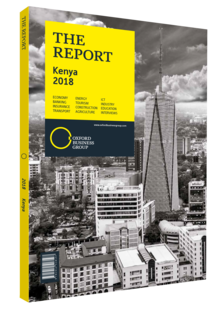Benchmarking equities in Kenya and the region
Election years are perceived by many as disruptive of day-to-day life, and 2017 was no exception for Kenya, which experienced an impact on the equity market and the economy at large in light of its vote that year. Nonetheless, despite election jitters, the Nairobi Securities Exchange (NSE) All Share Index hit 24.5% in 2017. The NSE 20 and the NSE 25 also closed the year at levels that were commendable given the circumstances. By comparison, the Kenyan equities markets have been depressed year-to-date (YTD), with the NSE All Share Index at -12.9%, as of September 2018. This contravened investor expectations given the impressive performance recorded in 2017. The poor performance has primarily been due to losses in the share price of large cap counters, which are largely traded by foreign investors who have been net sellers year to date.
Regional Contrasts
In comparison to other markets in the region YTD – and EAC markets specifically – the Kenyan equity market was the second-worst performer after its neighbour Tanzania, with the two markets posting contractions of 12.9% and 14.5%, respectively. Meanwhile, Uganda and Rwanda registered YTD performances of -11.1% and -1.5%, respectively.
However, we note that of Uganda’s 16 listed stocks, 10 are cross-listed in Kenya, and therefore Uganda cannot be seen as an independent comparison. Rwanda, on the other hand, despite a relatively stronger performance than its peers, has only eight listed counters, with five cross-listed on other bourses. Consequently, Tanzania should be seen as the best comparison, with only six of its shares cross-listed out of 26. In light of that information, we could say that in spite of its poor performance, Kenya managed to outperform its East African counterparts (see graph above).
It is also useful to gauge Kenya’s performance against the MSCI World Index (MXWO), which is a capitalisation-weighted index of 153 stocks from firms around the world. This comparison is important as it seeks to evaluate Kenya’s market against the broader world. The NSE All Share Index has contracted by 12.9% YTD, compared to a gain of 4.3% on the MXWO (see graph above).
Fourth Quarter Outlook 2018
The exits by foreign investors recorded this year can be mainly attributed to the broader trend of capital flight from the world’s emerging markets. In Kenya corporate earnings so far in 2018 have been depressed, except for within the banking sector.
However, the failure of Parliament to repeal the rate cap through the Finance Bill of 2018 has exacerbated bearishness in the banking industry. This is despite the sector reporting an average of 19.1% year-on-year net earnings growth in the first half of 2018. We still expect strong corporate earnings in the banking sector at the close of the year, and market indicators show an extremely oversold market, meaning a bounce could be on the horizon.
The largest contributors to this bounce would be overseas investors, who have an average participation rate of between 60 and 70% on the NSE. If investors begin re-examinining their strategies for emerging markets, we expect their capital to flow strongly through to the best performing counters and sectors in terms of coroprate earnings.
However, the flipside to this are the attractive rates available in the US. Indeed, if an anticipated Federal Reserve rate hike is undertaken in the fourth quarter of 2018, this would likely to translate to capital flight from emerging markets.
Nonetheless, for Kenya moving forward, key indicators that could drive improved equity performance include higher public spending, aggressive marketing by listed companies, the continued implementation of development plans such as Kenya Vision 2030, and rising operational efficiencies.
You have reached the limit of premium articles you can view for free.
Choose from the options below to purchase print or digital editions of our Reports. You can also purchase a website subscription giving you unlimited access to all of our Reports online for 12 months.
If you have already purchased this Report or have a website subscription, please login to continue.

